Some things in life make perfect sense. For example, a grilled chicken sandwich is called a grilled chicken sandwich because it is a sandwich in which the primary ingredient is grilled chicken. Ice cream is sweetened cream that has been frozen — no problem there. Pepperoni pizza is pizza with pepperonis on it. Hash is a common term for potato, and potatoes turn brown when fried or baked, so “hash brown,” too, is on the level. But I digest…
Today, we’re here to talk about weird food names that, on the face of things, really make no sense. In many cases, common foods to which we rarely devote a second thought are quite oddly titled when their names are lent a dash of scrutiny. Take for example the pineapple. Beyond the trite observation that this tasty, tangy fruit comes neither from a pine tree nor an apple tree (or from any tree at all, indeed! It’s the crown of a flowering herbaceous plant), the name makes no goddamn sense when compared with the terms used in almost every language other than English. See here:
Pineapple
Pineapple in French = Ananas
Pineapple in Polish = Ananas
Pineapple in Portuguese = Ananás
Pineapple in German = Ananas
But English? Nah, hell with that: PINEAPPLE. But why? Well, take a close look at a pineapple. Kind of looks like a pinecone, right? Those were familiar to Europeans who first encountered the tropical pineapple, so they applied their contemporary term for pinecones to this new fruit despite the fact that it was entirely dissimilar from a botanical standpoint. Oh well… pineapple.
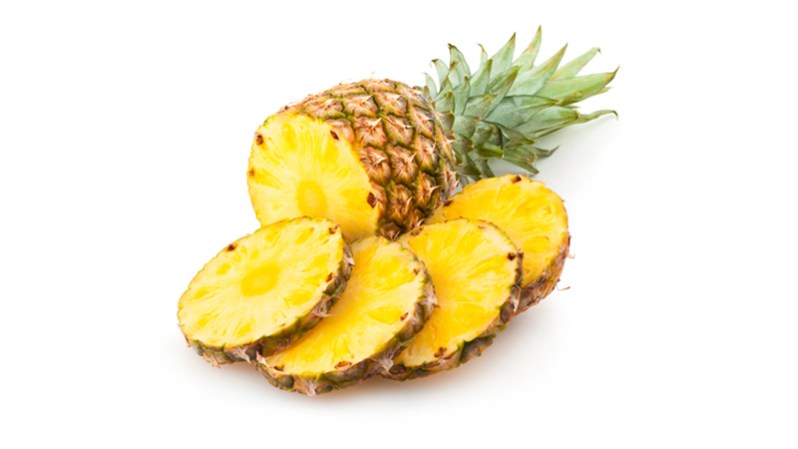
By delving into the etymology of common eats with weird names, we’ll see that often even the strangest food names actually make sense in the context of history, despite the fact that they make no sense in a culinary context. Let’s start with one of the most popular summer grilling foods that has a head scratch worthy name when you bother to pay it mind. So…
Why is it called a hot dog?
Whether you’re sinking your teeth into an all-beef, turkey, chicken, or mixed meat dawg, the term hot dog can be fairly applied when the food at hand is a tube of meat (or some faux meat imposter) served in a sliced bun. Hot dogs are the scion of pork sausages enjoyed in Germany as far back as the 1300s, and were brought to America in a form near their current state in the 19th Century. The hot dog is often topped with ketchup, mustard, and relish, and occasionally with chili, cheese, onions, peppers, and occasionally an entire Denver omelet. (That’s a regional variety, you probably don’t know it.) But what’s with that name?
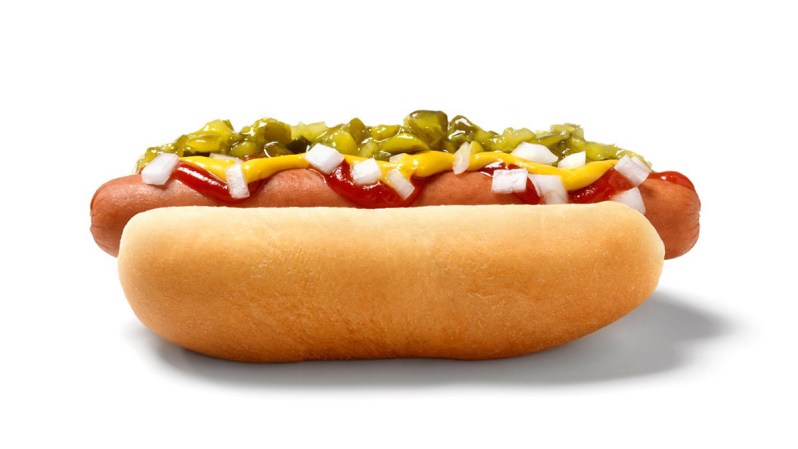
There is an apocryphal story that the term hot dog sprung from a single sports cartoonist’s illustration. The legend goes that Tad Dorgan, a New York Journal illustrator, drew a panel depicting sausages on buns being sold as “hot dogs” as a comical jab at the Germanic name for the meaty foodstuff, which was “dachshund sausage.” That story is almost surely false, and the cartoon in question has never been seen in the modern era if it ever existed at all. But there’s a kernel of truth there: indeed the term hot dog does come from a canine inspiration. Many 19th Century Americans initially looked down on the hot dog as low-quality street meat and joked that it was even made with dog meat. (Which, at least back in Europe back then, they sometimes were.) Another possibility is that German immigrants called the sausage-and-bun properly known in their orbit as the Frankfurter the “dachshund sausage” themselves, in playful reference to the squat, tubular dogs they brought with them from Germany.
So either way, whether as a loving tribute to a wiener dog or as sarcastic jab at “dog meat,” the American staple hot dog got its name from the canine world in the 1800s.
Why is it called a hamburger?
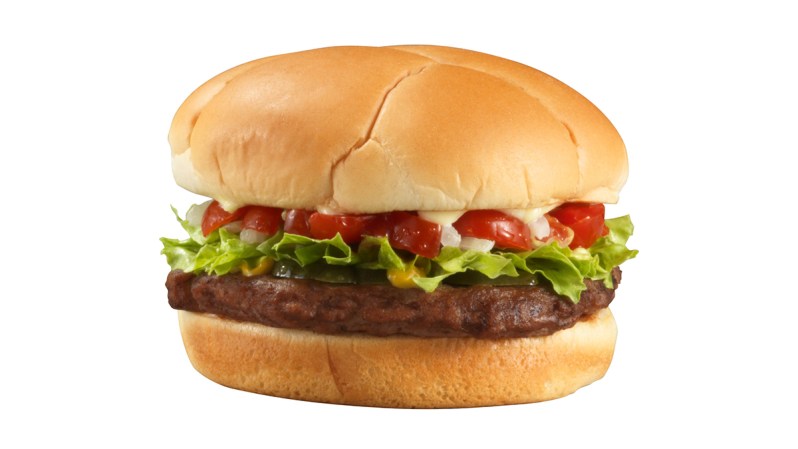
Weird that we call it a hamburger when it’s made from beef, not pork, right? Well, not really, once you know the history. This one is a bit more clear-cut than the hot dog, and again the etymology of the term hamburger leads back to Germany. Specifically to a large German city. That’s what the combination of cooked ground meat served in a bun is named for, the city of… Hamburg. While it’s not clear who made the first hamburger that we would recognize as such today (it might have been a Texas cafe in the 1880s, a New Haven food wagon in 1900, or a dozen other origin stories), but from the earlier days of the burger in its modern form, it was referred to as the hamburger. This was thanks to American familiarity with the slabs of salted, minced beef German sailors had been eating for the entirety of the 19th Century, a food they called Hamburg steak.
Why is it called jambalaya?
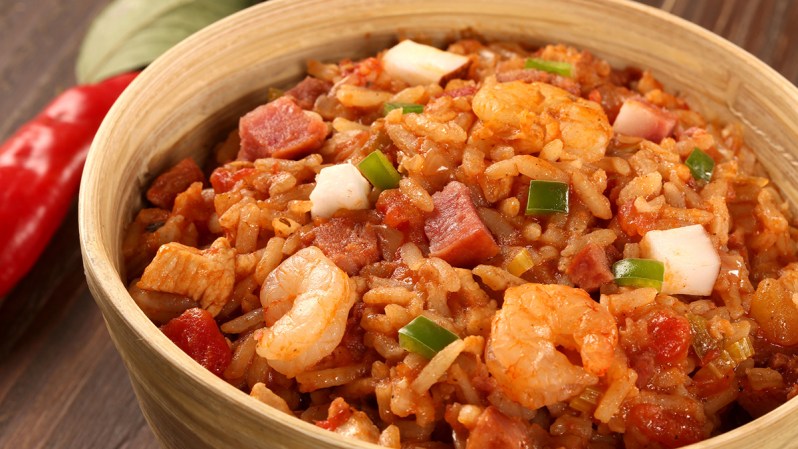
OK, first, for those of you poor souls who have never eaten jambalaya, this delectable dish comes from Louisiana and was influenced by Spanish, French, Creole, and Native American culinary traditions. It’s a thick, stew-like meal usually packed with rice, sausage, shrimp, vegetables, and plenty of spice. And it’s amazing. But while the dish is well-established in American cuisine, the word “jambalaya” can’t be definitively traced to any tradition. Various historians try to link it back to French, Spanish, or a native language, and many agree that the word was likely derived from an older Provencal dialect (similar to though distinct from several European languages) and comes from the word “jambalaia” which meant “to mix up.” A more compelling though likely dubious story is that the term comes from the native Atakapa language and was derived from the phrase: “Sham, pal ha! Ya!” Which essentially translates to: “Eat up, skinny!”
Why is it called a marshmallow?
Before we get into etymology, let’s talk about the actual food here. As you roast a jumbo marshmallow over a summer campfire or drop a handful of minis into your wintertime hot chocolate, have you ever stopped to wonder just what you’re about to consume? Most marshmallows are made from egg whites, sugar and/or corn syrup, gelatin, vanilla extract, and with cornstarch coating to keep them from sticking together. (And yes, gelatin is made from animal tissue.) But where did the name come from? Why, from the mallow plant, of course! (That’s Althaea officinalis to you botanists/sticklers.) Will you find even one trace of this plant in a modern marshmallow? No. You will not.
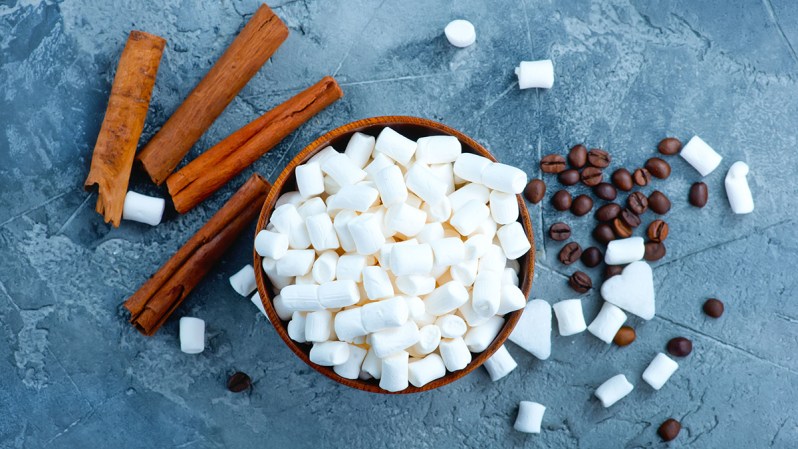
In Ancient Egypt, the roots of the mallow plant were processed together with sugar and then cooked down into a sweet and sticky food that was enjoyed as a confection and thought of as medicinal, too. Making the foodstuff was labor-intensive and time-consuming until more modern techniques and ingredients took over in the 1800s. As for the name?The mallow plant grows in wet, marshy conditions, so there’s the name explained for you, as simple as that: the modern marshmallow mimics the flavor of the treat derived from the root of the plant called the marshmallow.



